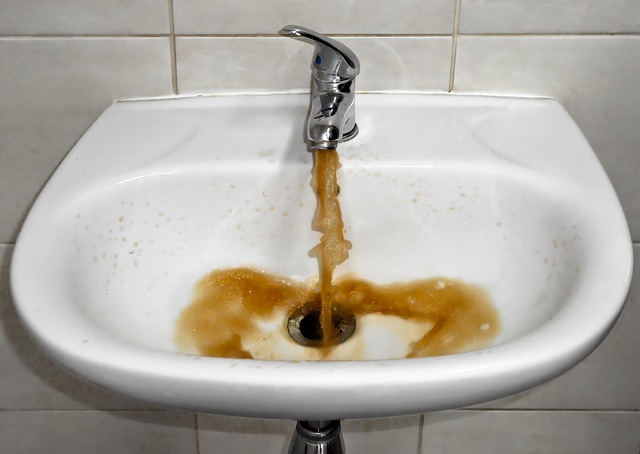Contamination occurs when food comes into contact with bacteria, viruses, or other harmful substances. This can happen during food preparation, storage, or transportation. Irradiation occurs when food is exposed to high levels of radiation. This can kill bacteria and other organisms that can make food unsafe to eat.
What is contamination?
(Image by Ahmad Ardity from Pixabay )

Contamination occurs when there is a transfer of harmful bacteria, viruses, or other microorganisms from one surface to another. This can happen through contact with contaminated food, water, or objects; or by coming into contact with someone who is infected.
What is irradiation?
Irradiation is a food safety technique that involves exposing food to ionizing radiation. This radiation can kill bacteria and other pathogens that may be present in the food. Irradiation can also extend the shelf life of food by preventing spoilage.
The types of irradiation
There are two main types of irradiation: Electron beam irradiation and Gamma irradiation.
Electron beam irradiation uses high-energy electrons to ionize molecules in the food.
Gamma irradiation uses high-energy photons (gamma rays) to ionize molecules in the food.
The difference between contamination and irradiation
Contamination and irradiation are two terms commonly used in the context of radiation and radioactivity, but they have different meanings.
Contamination refers to the presence of radioactive material on surfaces, objects, or people. This can occur as a result of a spill, leak, or other release of radioactive material. The radioactive material can contaminate surfaces and objects, and can pose a risk to people who come into contact with it. Contamination can be internal or external, depending on whether the radioactive material is ingested or absorbed through the skin.
Irradiation, on the other hand, refers to the exposure of living organisms, such as humans or animals, to ionizing radiation. This exposure can occur from natural sources, such as cosmic rays or radon gas, or from man-made sources, such as medical x-rays or nuclear power plants. The effects of irradiation can vary depending on the dose and duration of exposure, and can range from mild skin irritation to radiation sickness or even death.
In summary, contamination refers to the presence of radioactive material on surfaces or objects, while irradiation refers to the exposure of living organisms to ionizing radiation. Both can be hazardous to human health and require careful management and mitigation to minimize their risks.
The repercussions of irradiation as a food safety technique
Irradiation is a food safety technique that involves exposing food to ionizing radiation to reduce the risk of foodborne illness and increase the shelf life of food. While irradiation can be effective in reducing the risk of foodborne illness, there are some potential repercussions that should be considered:
- Changes to food quality: Irradiation can cause changes to the color, texture, and flavor of some foods, which may make them less appealing to consumers.
- Public perception: Some consumers may be hesitant to purchase irradiated foods due to concerns about the safety and efficacy of the process.
- Regulatory concerns: Some countries have restrictions on the use of irradiation for food safety, which can limit international trade and cause logistical challenges for food producers and retailers.
- Cost: The cost of implementing irradiation can be relatively high, and this cost may be passed on to consumers in the form of higher prices.
Environmental impact: The production and transport of radioactive materials used in irradiation can have environmental impacts, and the proper disposal of radioactive waste is an important consideration.
Despite these potential repercussions, irradiation can be an effective tool for reducing the risk of foodborne illness and increasing the shelf life of food. It is important to carefully consider the potential benefits and risks of irradiation when deciding whether to use it as a food safety technique.
The repercussions of contamination
Contamination can have serious repercussions, particularly when it involves radioactive materials or other hazardous substances. Here are some potential consequences of contamination:
- Health effects: Exposure to contaminated materials can lead to a range of health effects, depending on the type and level of contamination. This can include radiation sickness, cancer, birth defects, and other illnesses.
- Environmental impact: Contamination can have long-lasting environmental impacts, particularly in cases where the contaminated material is not properly contained or remediated. This can include damage to ecosystems, soil, water sources, and wildlife.
- Economic costs: Contamination can have significant economic costs, including cleanup and remediation efforts, lost productivity, and damage to property values.
- Public perception: Contamination events can lead to negative publicity and public concern, which can have an impact on consumer confidence and sales for affected businesses.
- Legal liabilities: Companies or individuals responsible for contamination can face legal liabilities, including fines, lawsuits, and criminal charges.
Overall, contamination can have serious and wide-ranging consequences. It is important to take steps to prevent contamination and to properly manage and remediate any contamination events that do occur.
What are the causes of irradiation?
There are two main types of irradiation: external and internal. External irradiation occurs when the body is exposed to a source of radiation from outside the body, such as radon gas or X-rays. Internal irradiation occurs when radioactive materials enter the body and emit radiation, such as when people consume contaminated food or water.
The main cause of irradiation is exposure to ionizing radiation. Ionizing radiation is a type of high-energy radiation that can damage cells and DNA. It can come from natural sources, like the sun, or from manmade sources, like nuclear reactors and x-ray machines.
Exposure to ionizing radiation can cause a number of health problems, including cancer, birth defects, and tissue damage. The risks associated with exposure to ionizing radiation depend on the dose (amount) of radiation received, the duration of exposure, the rate at which it is received (dose rate), and how sensitive the individual is to its effects.
What is the difference between irradiation and radiation?
There are two types of radiation: ionizing and non-ionizing. Ionizing radiation is the type that can cause damage to cells, making them unable to function properly. This can lead to cancer. Non-ionizing radiation does not have enough energy to damage cells. Examples of ionizing radiation include X-rays, gamma rays, and ultraviolet (UV) light. Sources of non-ionizing radiation include microwaves, radio waves, and visible light.
Irradiation is the process of exposing food to ionizing radiation in order to kill bacteria and other microorganisms that can cause food poisoning. Radiation is a general term that refers to any type of energy that travels through space.
What is irradiation used for?
Irradiation is most commonly used to treat food. The process helps to kill bacteria and other microorganisms that can cause food poisoning. It can also extend the shelf life of food by reducing the growth of spoilage bacteria. Irradiation is sometimes used to sterilize medical equipment or to treat cancer.
How to reduce contamination?
One way to reduce contamination is to use high-quality ingredients and cook them properly. Another way to reduce contamination is to avoid cross contamination by keeping raw food separate from cooked food, using separate cutting boards, and washing hands thoroughly.
How to identify contamination?
(Image by Jerzy Górecki from Pixabay )

Contamination can be difficult to identify, as it may not always be visible or immediately obvious. However, there are some common signs and methods for identifying contamination:
- Visual inspection: In some cases, contamination may be visible to the naked eye. This can include discoloration, unusual textures or growths, or visible spills or leaks.
- Testing: Testing samples of air, soil, water, or other materials for the presence of hazardous substances can help to identify contamination. This can include laboratory analysis or field testing methods.
- Monitoring: Regular monitoring of air, water, soil, and other materials can help to identify changes or increases in levels of hazardous substances.
- Historical information: Historical information about the site, such as past land use or industrial activities, can provide clues about potential sources of contamination.
- Expert consultation: Consulting with experts in contamination assessment, such as environmental engineers or toxicologists, can help to identify potential sources of contamination and develop strategies for managing and remediating contamination.
Overall, identifying contamination can be a complex process that requires careful investigation and analysis. It is important to work with qualified professionals and follow established protocols and procedures when dealing with potential contamination events.
Featured Image By – Image by Andrew Martin from Pixabay








